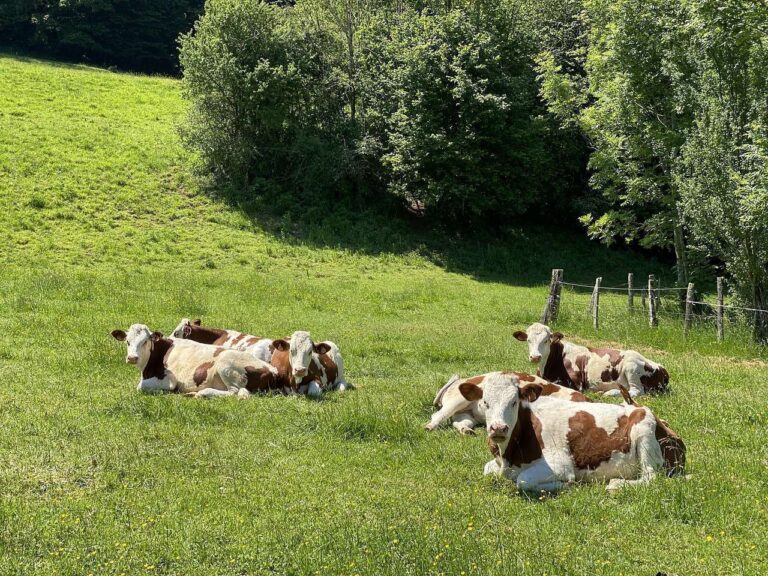Montbéliarde cattle are identifiable in each specimen by their red speckles drawn on their white coat. The head and legs are usually completely white and the ears are red. It is 1.45 meters tall: cows usually weigh between 600 and 700 kilograms, and bulls weigh between 900 and 1,200 kilograms. Its maintenance is simple and low cost, which makes it a breed that offers good profitability.
The Montbéliarde breed originates from France, and is mainly recognized for being a great producer of milk. In fact, it is the second largest dairy breed in the country.
Breed qualities
Their qualities are multiple. Breeders point out that these cattle are very resistant to diseases, especially mastitis; calving is easy to attend, besides being long-lived animals.
Genetics gives Montbéliarde specimens great adaptability to various types of climates. For this reason, this breed is currently found in countries such as Mexico, United States, Canada, Colombia, Ecuador, Peru, Chile, among others.
One of the main virtues of the breed is that its milk has an excellent fat-protein ratio, which makes it of extraordinary cheese-making quality.
Due to its characteristics, it is also a good option for the meat market, even more so than Holstein cattle (Holando). Montbéliarde calves are highly appreciated in restaurants for the production of cuts of the following types Baby Beef, which stand out for being tender and of very good flavor.
Crossbreeding
In Latin America, crossbreeding is very common to increase production profits. Montbéliarde cows are crossed with Holsteins to increase longevity and fertility. Crossbreeding with the Zebu breed is widely used to increase the weight and growth of offspring.
In conclusion, Montbéliarde cattle breeding is highly profitable for farmers, both purebred and crossbred.



